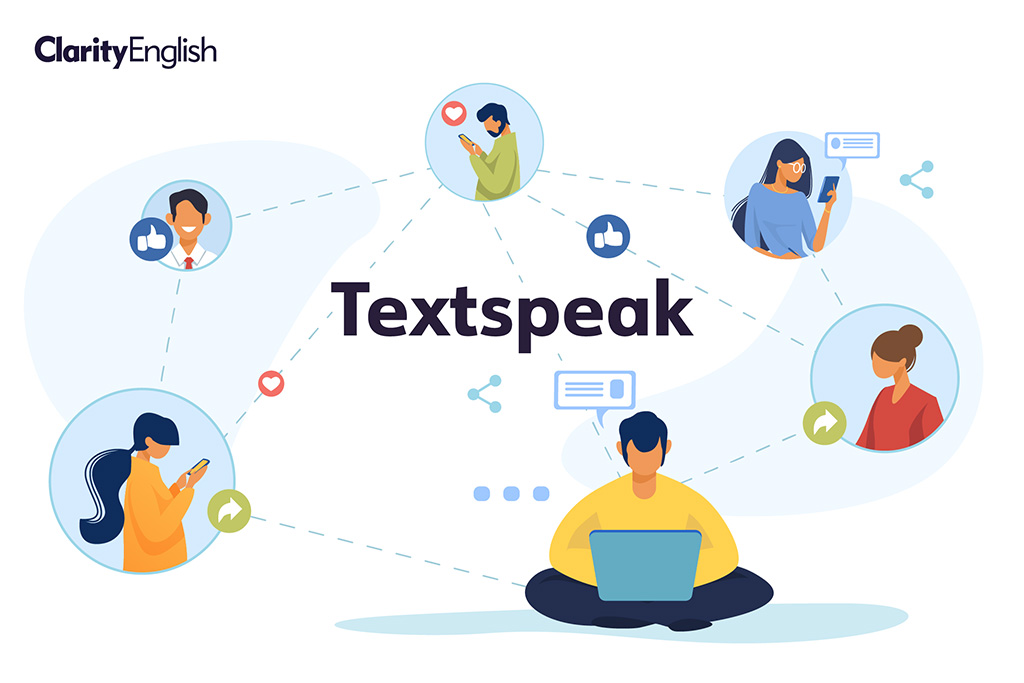How did I, a native English speaker, have a language barrier with other native English speakers? It is so easy to feel lost and isolated online. Several years ago, I moved from Hong Kong to the UK for university. I decided to join Facebook groups and chats to get to know my new coursemates. Unfortunately, I stuck out immediately. Everyone was using textspeak (anything from abbreviations and slang to references) I didn’t know, and no one used the textspeak I was using. I was a native English speaker with an online language barrier.
What was a slightly awkward situation for me could be an extremely confusing situation for a non-native English speaker. EAL learners expect to be taught grammar rules, the 43 sounds of English, and plenty of vocabulary in class. But once they start using the English they have learnt to socialise online, there is a whole new set of rules they have to learn. Textspeak isn’t an area that is included in many language curricula – but it should be.
Over the last few months, we have been busy updating Clarity’s Practical Writing, a program that teaches writing for all areas of life: academic, professional and personal. The textspeak unit in particular has been a challenge. One key question we asked was: how do we teach textspeak that is relevant and appropriate in an environment that changes so quickly? This led us to think about the fundamentals of online chat and what role textspeak really plays in our lives.
Textspeak is often associated with abbreviations like omg and lol. But it’s so much more than that. In the early days, it was all about functionality. Reducing the number of letters meant reducing the cost of your message – texting ‘as soon as possible’ was setting yourself up for financial ruin. Today, those restrictions don’t exist anymore. Why then are phrases such as asap and lol ingrained in our vocabulary?
Some critics think it is laziness. Anne Merrit, a writer for The Telegraph, said that textspeak ‘looks like a simple decline in proper language skills, born out of a digitally literate culture that has grown too comfortable in an age of abbreviations and spell checks’.
But really, textspeak is a lesson in codeswitching. Learners have to grasp what is appropriate to use with colleagues but not with friends, and vice versa. What language is mutually accessible? How friendly should you be? Not so easy in the age of work phones, voice notes and emoji reactions.
Aside from understanding vocabulary and tone, textspeak is an opportunity to learn about style. Textspeak allows you to show your personality: express your excitement with not one but three (!!!) exclamation marks; show your sympathy with a sad face 😞; throw in some umm and ahhh fillers. You can now quite literally write how you speak with speech-to-text technology. It is a great way to add depth and cues into messages.
Every day we switch from app to app, sending messages, emails, posting comments and captions. We don’t really think about the fact that our tone, style and voice change with each of those messages. Learners of English shouldn’t have to grapple with this by themselves. Yes, teaching textspeak might involve a vocabulary list of abbreviations and slang. But more importantly, it teaches learners to recognise and replicate tone and cues from others. It might not be an obvious choice for your English curriculum, but adding this module will help your learners become better communicators both in their work and personal lives.
If you’d like to take a look at the textspeak unit in Practical Writing, please send me an email at katie.stokes@clarityenglish.com
Clarity’s Practical Writing upgrade will be released this year. In it you will find an updated version of the Textspeak unit.

